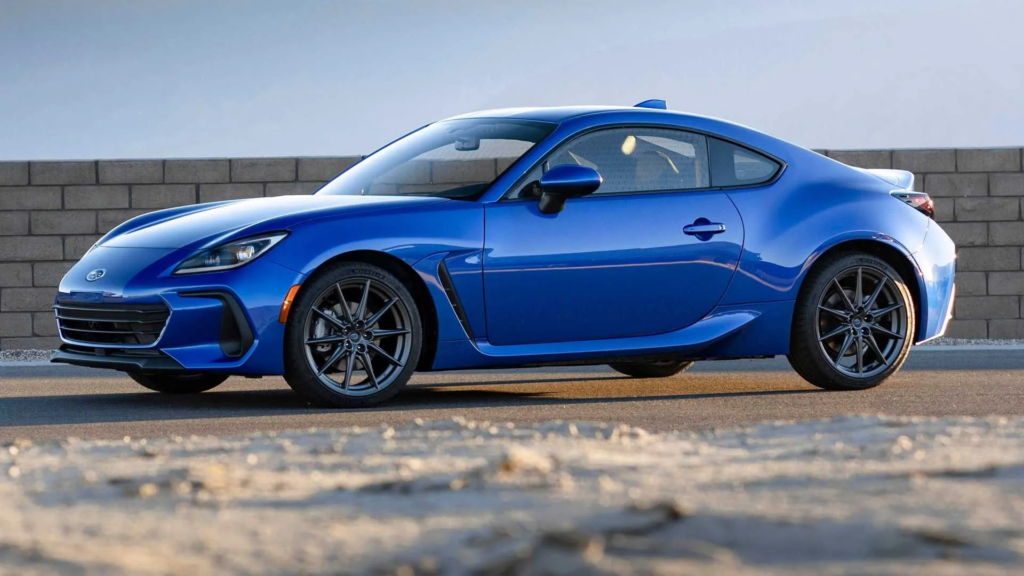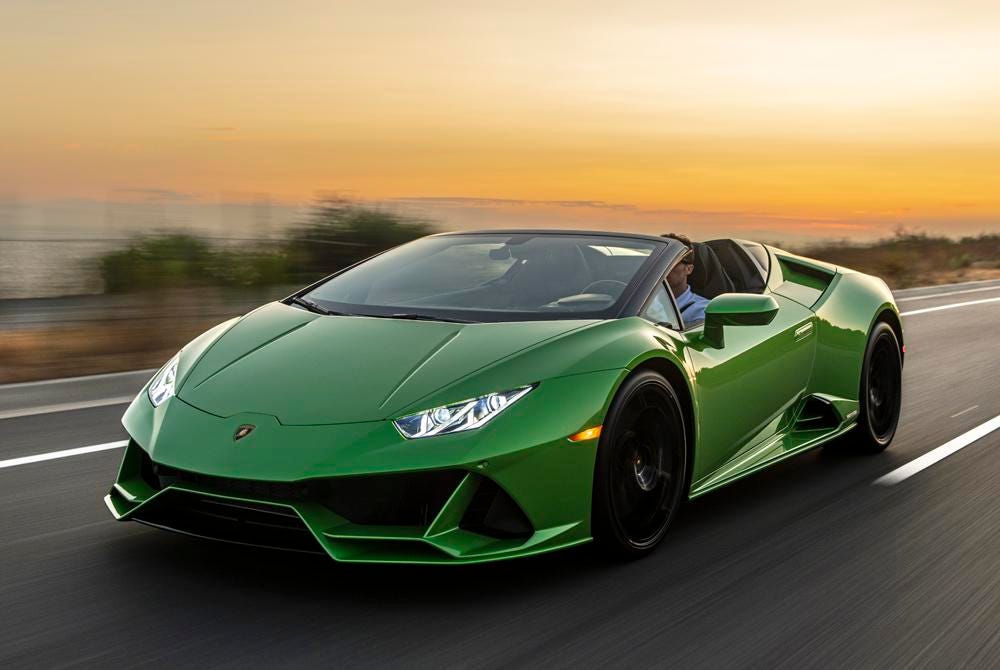Turbocharged engines are known for its ability to make use of the wasted exhaust gases to pull more air into the intake valve, producing power more economically. Here are the 10 cars that needs turbos badly…
Contents [hide]
Overview
Auto enthusiasts adore naturally aspirated engines, particularly strong ones, but forced induction-equipped vehicles typically outperform naturally aspirated vehicles in terms of power. Since quite some time, Ferrari has been experimenting with turbocharged technology, and some of their most recent V8-powered sports cars have redefined what the company is best known for. The SF90 is a prime example of this; it makes use of three electric motors in addition to a twin-turbocharged 4.0-liter V8 engine to produce a total of 986 horsepower. Additionally, even though naturally-aspirated engines typically produce better sound and throttle response, they are also gradually disappearing from the market. There is a valid reason for that as well because turbocharged engines can produce more power while also achieving greater fuel efficiency. The naturally aspirated engines on this list have a classic appeal that we don’t mind, but every vehicle on this list needs forced induction to increase power.
10. Mazda Miata

We understand that turbocharging a Miata might seem sinful, but keep in mind that Mazda pioneered the technology with the NB Miata in 2004 and dubbed it the Mazdaspeed Miata. The NB Miata generated 178hp in total after including the turbo, which was 38hp more than the four-cylinder engine in the base model. Imagine that the latest ND Miatas have a 2.0L, four-cylinder engine that produces 181hp. What if Mazda were to repeat history and install a turbocharger in the ND’s engine bay to increase power to 200 horsepower? They would then rename the vehicle the Mazdaspeed Miata. After reviewing the current ND Miata RF, we can confidently state that a small boost in power won’t harm anyone.
9. Toyota GR86/Subaru BRZ

Speaking of compact sports cars, the Toyota GR86 and Subaru BRZ are the newest models to hit the market. Because they are nearly identical and share a 2.4L naturally aspirated four-cylinder boxer engine that generates 228hp and 184lb-ft of torque, we list both of these vehicles under the same entry. It might seem pointless to add a turbocharger to these vehicles, but just consider a cheap, lightweight Japanese sports car with a manual transmission and about 300 horsepower. Oh, and lest we forget, this action may even steal some customers away from Porsche’s small sports cars!
8. Chevrolet Spark

The Chevrolet Spark is the cheapest new car available, and once you see what engine is powering it, you can appreciate the $14,595 price tag. Although the Chevrolet Spark’s name might give you the impression that it employs hybrid technology, it is actually propelled by a 1.4L naturally aspirated engine that produces 98hp and 94lb-ft of torque. The Spark is miles ahead of the Mitsubishi Mirage, but the Chevy needs the extra power because it weighs 2,305lbs, or about 250lbs more than the Mitsubishi. It definitely needs more, and our prediction is that adding a turbocharged Spark to the Chevy lineup will increase sales.
7. Lexus LC500

Here we have the Lexuc LC500 which is highly praised, not for its acceleration, but rather for the sound and appearance of its N/A 471-hp 5.0L V8. Well, as you can see, the LC500 is one of the heaviest sports cars available right now thanks to its estimated curb weight of 4371 lbs. However, we figure that by adding a turbocharger to its V8, the LC500 will run just as well as it sounds and looks without sacrificing the sharp exhaust note of the LC500.
6. Jaguar F-Type P450

It’s interesting to note that Jaguar previously offered the F-Type‘s base model, the P300, with a turbocharged 2.0L four-cylinder engine, but has decided to stop doing so and will only continue to offer the F-Type with a V8 engine. These are not ordinary V8s either; they have 5.0L of displacement and superchargers installed. Despite weighing close to 4,000 pounds, the P450 still manages to produce 444hp, but its 0-to-60 time of 4.4 seconds is less than ideal compared to the R-model’s 3.5 second mark. Jaguar, in our opinion, should keep the supercharged V8 in the F-Type R but swap out the supercharger in the P450 for one or two turbochargers.
5. Lamborghini Huracán

The tuning industry has long enjoyed taking Lamborghini Huracán and Audi R8 models, adding two turbochargers to their 5.2L V10 engines, and removing their rear bumpers to display their prized possession—a mid-mounted V10 engine with more than 1,000hp. The Huracán needs a proper send-off before it is discontinued, and what better way to do that than by extracting as much power as you can from its powertrain? Of course, we’re not suggesting Lamborghini do exactly the same.
4. Lexus RC-F

A naturally-aspirated engine was installed in the majority of the incredible sports cars Lexus has produced over the past few years, the most notable of which is the Lexus LFA. The 5.0L V8 engine in the Lexus RC-F generates 472hp and 395lb-ft of torque, so it is by no means a weak vehicle. The RC-F does have one drawback, though: it needs to lose weight. The standard model weighs 4,017 pounds, and the “stripped-down” version weighs almost 2,800 pounds. This car needs plenty of power to make up for its weight.
3. Caterham Seven 420

The Lotus Seven serves as the basis for all of the Seven models produced by Caterham. The most affordable models typically have supercharged engines, while the entry-level models, like this Seven 420, have naturally aspirated ones. Base models typically have turbocharged engines. The Caterham 420 can accelerate from 0 to 60 mph in just 3.8 seconds thanks to its 2.0L 4-cylinder Ford Duratec engine, which is hidden underneath its hood. This engine produces 210hp and 203lb-ft of torque. However, adding a turbo to its Duratec engine would significantly improve these numbers.
2. Suzuki Jimny

The Suzuki Jimny was created for the first time in 1970, but it wasn’t until 1985 that it came to the attention of the general public when Jimny models were first sold in the United States under the name Samurai. The Jimny still embodies what it did in the past; it is a retro-styled small SUV capable of navigating terrains that some extreme off-roaders would have been helpless to handle. One minor drawback is that its naturally aspirated 100hp 1.5L four-cylinder engine lacks a certain charisma in the city. We recognise the value of having a naturally aspirated vehicle when it comes to navigating hills, but we can’t help but yearn for a turbocharged, spirited small SUV.
1. Mitsubishi Mirage

The Mitsubishi Mirage‘s 1.2L three-cylinder engine only produces 78hp and 74lb-ft of torque, making it unsuitable for the average motor enthusiast. That means that in the real world, this affordable commuter car, with a starting price of just over $16,000, can only accelerate to 60 mph from a complete stop after 11 seconds. We can’t help but wonder what a turbocharged Mirage could become if it offered an enjoyable driving experience without costing more than $20,000. Sure, it was never intended to be blazingly fast.
FOLLOW US ON INSTAGRAM:21motoring

